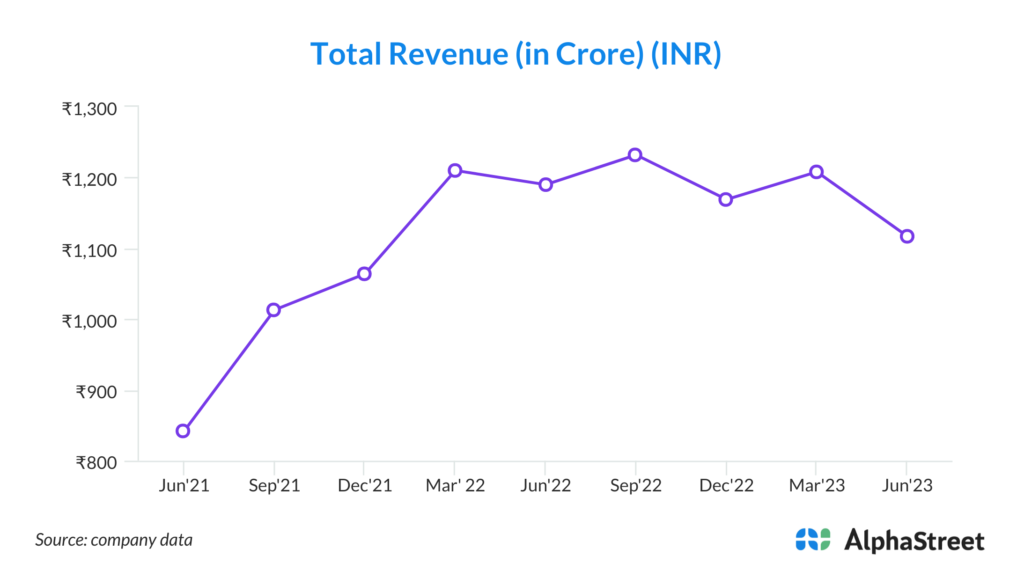Stock Data:
| Ticker | NSE: CENTURYTEX |
| Exchange | NSE |
| Industry | TEXTILE |
Price Performance:
| Last 5 Days | +4.36 % |
| YTD | +47.71 % |
| Last 12 Months | +30.12 % |
Company Description:
Century Textiles and Industries is a diversified conglomerate operating across three core sectors: real estate, pulp and paper, and textiles. In the real estate domain, the company is capitalizing on a thriving Indian real estate market, with a focus on premium and luxury segments.

Critical Success Factors:
1. Diversified Business Portfolio: Century Textiles operates in three distinct business verticals: real estate, pulp and paper, and textiles. This diversification allows the company to mitigate risks associated with economic fluctuations in any one sector. It provides stability and revenue streams from multiple sources.
2. Real Estate Boom: The real estate division is currently benefiting from a robust upcycle in the Indian real estate market. Residential sales have surged, and the sector is experiencing one of its most vibrant periods in over a decade. Century Textiles and Industries’ projects have garnered significant bookings, emphasizing the strong demand for its properties.
3. Strategic Acquisitions: The company’s strategic acquisition of three notable projects in premium locations, including Pune, Mumbai, and Bangalore, demonstrates a forward-looking approach to expanding its real estate portfolio. These acquisitions, with substantial gross development values (GDV), position the company to capitalize on high-potential markets.
4. Strong Collection Efficiency: Century Textiles and Industries maintained a robust collection efficiency, with INR 369 crores collected from all projects during the quarter. This high collection rate, at 98%, indicates strong demand and efficient financial management.
5. Diverse Real Estate Portfolio: The company’s real estate projects encompass a wide range of properties, including residential and commercial developments. This diversification within the real estate sector itself enables the company to cater to various customer segments and market demands.
6. Capacity Utilization Improvement: In the pulp and paper segment, the company improved its overall capacity utilization to 95% during the reported quarter, up from 93% in the previous quarter. Despite challenges in the paper market, this increase in capacity utilization is a positive sign, indicating operational efficiency.
7. Cost Management Measures: In the face of pricing pressure and increased competition, Century Textiles and Industries implemented effective cost management strategies within its pulp and paper division. This helped the company maintain its operating profitability even during challenging market conditions.
8. Long-Term Growth Strategy: The company’s strategy remains focused on the premium and luxury segments within its real estate business. This strategic approach aligns with the company’s commitment to sustained future growth, targeting high-value customer segments.

Key Challenges:
1. Global Economic Challenges: The company operates in a global economic environment characterized by challenges such as a slowdown in global growth, inflation, and uncertain geopolitical conditions. These factors can impact the demand for its products and services.
2. Real Estate Market Vulnerability: While the Indian real estate market is currently experiencing growth, it remains sensitive to economic fluctuations. A downturn in the real estate sector could affect the company’s profitability and growth prospects.
3. Raw Material Price Volatility: The pulp and paper segment faces challenges related to raw material price volatility. Fluctuations in the cost of raw materials can impact the company’s margins and profitability.
4. Competition from International Mills: Increased competition from international mills in the pulp and paper segment can lead to pricing pressure and lower net sales realization (NSR). This competition may affect the company’s market share and profitability.
5. Demand Fluctuations: Demand fluctuations in segments such as tissue and board can affect the company’s sales volumes. Demand remains stagnant in some high-consumption sectors like FMCG and Pharma, posing risks to revenue.
6. Cost Pressures: The company faces cost pressures in domestic markets due to imports and excess supplies from domestic mills. These cost pressures can impact profitability, especially if pricing remains competitive.
7. Export Challenges: Export demand from Europe and the U.S. is expected to remain low due to recessionary impacts. This limits the company’s growth opportunities in international markets and exposes it to global economic conditions.
8. Textile Industry Slowdown: The textile division is grappling with sluggish demand, as most Indian mills operate at partial production capacity. The apparel segment’s weak demand due to inventory accumulation poses challenges to revenue generation.
